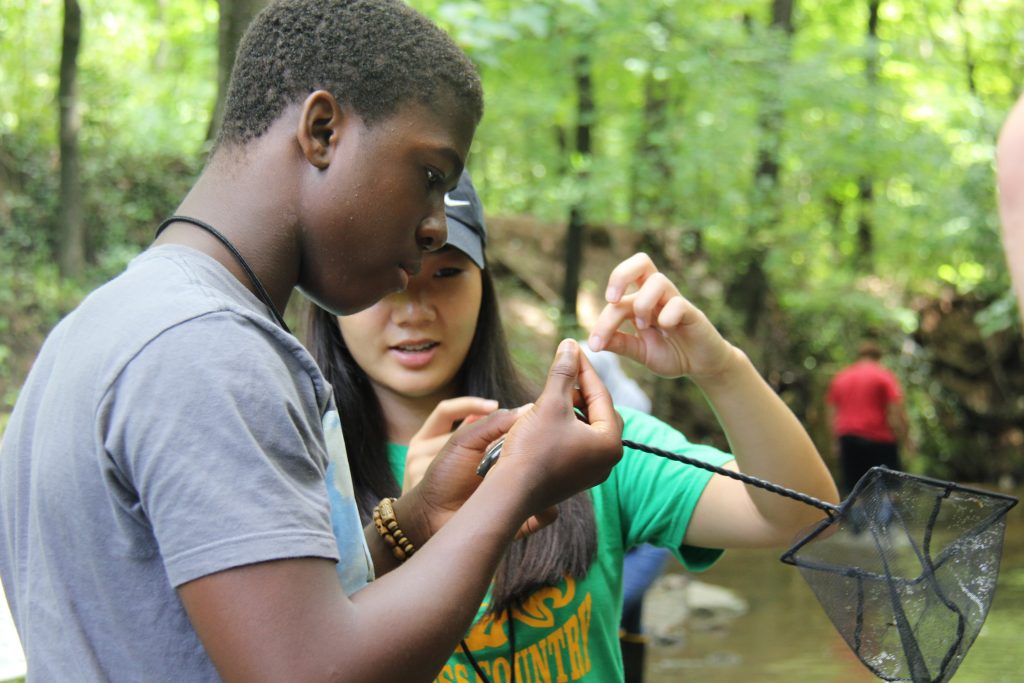IE’s Environmental Resource Program wins NSF grant to enhance program for underrepresented minority students in geosciences
February 5, 2017
For the last five years, IE’s Environmental Resource Program has received funding from the National Science Foundation to administer high school and undergraduate programs that promote, encourage and support underrepresented minority students to pursue careers in the geosciences. The program is called “IDEA” and stands for “increasing diversity and enhancing academia.” The group recently received a second NSF grant to build on previous years’ work and to enhance the undergraduate experience in what is now called “IDEA 2.0.”
This new funding will span three years and includes a partnership with North Carolina Central University (NCCU), a historically black college/university (HBCU). The goals of the funding are to encourage student interest in geoscience research and careers, strengthen participation of underrepresented minority and women students in the geosciences, and institutionalize these efforts, while creating a model for other schools that wish to implement similar programs. The partnership also builds on the strengths of UNC-Chapel Hill and NCCU to provide internships in labs and externships in real-world job placements.
“Diversifying any scientific field has significant implications,” says Kathleen Gray (M.S.P.H. ’92), director of ERP, “because the more varied perspectives we have when solving problems, the more insights and potential discoveries are possible. More diverse viewpoints can net more creativity, innovation and opportunities to learn more and advance the field.”
Another emphasis of the grant is the role of mentors. IDEA 2.0 will enlist School of Education Associate Professor Sherick Hughes (MPA ’01, Ph.D. ’03) to evaluate and understand how mentors in the program influence students’ views of the geosciences and whether interactions with mentors influence retention in the field. Hughes and his team will collect, analyze and interpret narratives about the experiences of students in the program.
“This project is significant for educators in that it may delineate and document paths leading underrepresented minority students toward or away from considering the geosciences as a college pathway and career, so that educators can help more local students to know this path is open to them and how to find it,” says Hughes.
“One of the critical barriers to minority students continuing to careers in geosciences is the lack of mentorship and general feeling of ‘not fitting’ into geoscience culture,” says Gordana Vlahovic (M.S. ’93 and Ph.D. ’99), associate professor and chair of the Department of Environmental, Earth and Geospatial Sciences at NCCU.
Capitalizing on the strengths of NCCU and UNC-Chapel Hill, Gray hopes that students will have reciprocal experiences that enhance their understanding of the geosciences, such as working in labs, having meaningful interactions with students, faculty and mentors, while they gain skills from the programming and placements in intern and externships.
“We’ve seen students come in not understanding research protocols and career opportunities and they leave with greater research skills,” says Gray. “They also gain confidence in themselves as scientists. We have had several students go on to future study and jobs in the geosciences and that is the ultimate goal of the program. Our first five years show positive outcomes and these next three are focused on institutionalizing the program to the greatest extent possible, continuing to create learning opportunities for students, and also helping mentors understand the important role they play in student success.”
Thirty students over three years will be recruited to participate in IDEA 2.0.
Learn more about the IDEA program at https://ie-old.sites.unc.edu/idea-undergraduate/.
